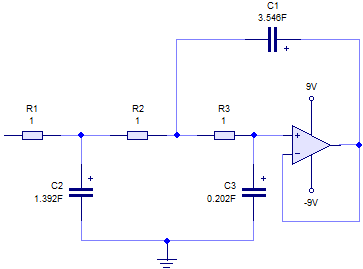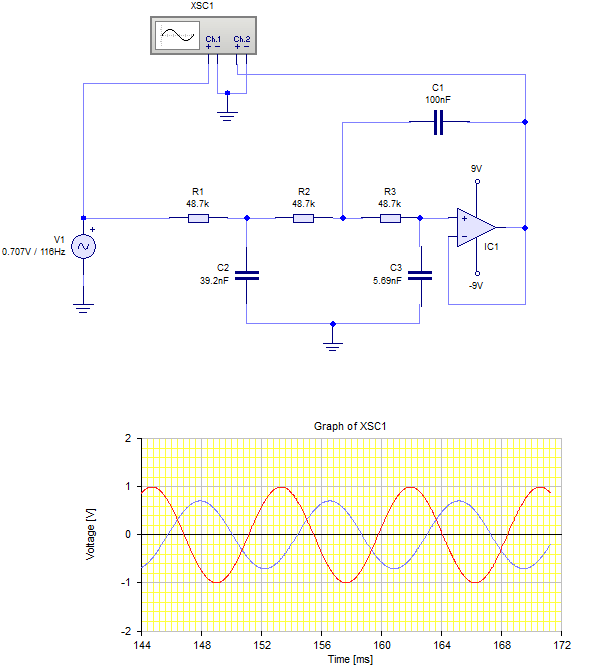I am trying to design a third order Butterworth filter with Sallen–Key topology. I am quite new to this and there is not much only about third order variations.I have the following requirements:
- Gain: 1 (unity)
- Passband (cut off): 116 Hz
- Stopband: 500 Hz
- Stop band attenuation: ≥ 35 dB
I thought I could make the original sallen key configuration into a third order by simply adding an RC circuit at the output, then calculating both of the fc to be 116 Hz. The 2nd order circuit was calculated by normalizing the resistor and capacitor values by setting fc to 1 rad/s, then scaling up (method shown in image). These values where multiplied by m = 116 (resistor) and 1/116 (capacitor), yielding:
- R1 & R2: 116 ohm
- C1:16.7 μF
- C2:8.36 μF
With this the passband is correct (116 Hz at -3 dB), however obviously the attenuation is not steep enough to yield the passband attenuation. I am not sure on how to configure the third order section and was wondering if I could get some assistance on this. This is a revision piece, where we were told to make a third order butterworth filter with sallen key topology.




